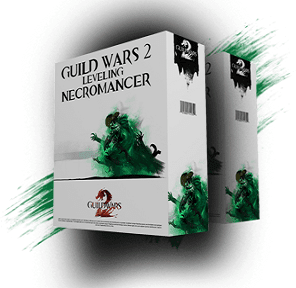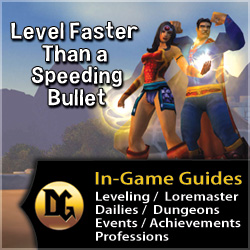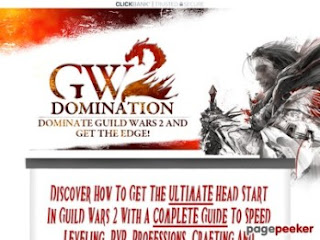
Guild Wars 2 the massively multiplayer role player game are enriched with the imaginary place called world of Tyria, is an endlessly intriguing place, stuffed with mystery and adventure, gifting you with gorgeous sights and personal stories that sketch themselves into your memory. This is one sort of stories you will tell for months to come--and they arise from your own impulsive experiences. In the Guild war 2 you and your guild-mates emerged from chilly waters into an ominous thunderstorm, captured a tower from the enemy, and escaped from a roaring crowd of necromancers and rangers before they could deliver you to the devil. All on a sudden will arise dragon with fire breathing and land in a dark-misted field, and you joined a legion of soldiers to cleanse the land of its affliction.
How does Guild Wars 2 make Tyria so popular and demanding? It begins with the loss of the traditional quest log. That isn't to say that Guild Wars 2 doesn't provide adventurous quests and other interesting stuff outside the main storyline--it's that they are structured in a way so you go towards the map and explored the world around you while following the story. In a sense, your map serves as a journal. Here, you see points of interest to discover; waypoints that you can unlock and that serve as nodes for quickly traveling from one area to the other.

Here are surprises lurking on mountaintops and within hidden caves. All of a sudden, you're stumbling upon a secretive entrance or emerging from a deep lake to discover a hidden oasis. Then after you may inspect hidden treasure, tricky labyrinths, and giant ogres needing a smack-down.
You will get access to whatever gear they sell, which you buy not with gold, but with a currency called karma, earned by playing in world events and by just doing things. This awards is more or less like the traditional "take quest, earn reward" structure of most role-playing games, but the reward is access to a merchant's entire inventory, rather than a piece of equipment you may not want or need. You don't have to speak to that character to take on the task--you will be prompted when you come near, and the prompt disappears if you leave the area before completing the goal.

It may seems like small adjustments to a familiar formula, but Guild Wars 2 rethinks old standards in a fashioned way so that you can go have an adventure of your own, rather than following adventures created by others. But in other games, there's no real reason to complete adventure: the quests don't provide participating rewards, and local wildlife goes down in a single hit. In Guild Wars 2, your level scales downward in such places so that your foes are a greater threat. Furthermore, while your experience rewards aren't notable in lower-level regions, the loot you earn is scaled to match your level.

Those "heart" missions generally involves repairing fences, killing enemies, delivering ale to thirsty inn patrons, and more. Not all task is all that engaging; some activities are just busywork (collecting tools), while others involve elements (such as stealth) that don't feel natural given Guild Wars 2's basic mechanics. You can travel others are and get Vista as well.
Getting to those vistas can be a joy or a task depending on the quality of the jumping puzzles that lead to them. While you do get experience for unlocking these vistas, the greater reward is getting the chance to admire Tyria without hindrance. Guild Wars 2 is a great game that makes a feeling in big ways and small. There is a bridge takes the form of a giant sloop now retired from its days sailing the seas in Lion's Arch. There are steppe, a dragon's electric attacks have burned the foliage to a crisp in Blazeridge. From snowy mountains to humid swamps, Tyria encompasses a various number of climates and landscapes, that make it looks a dream land.

The work of 2D and 3D characters and objects is a great job by the developers and they made it great by letting 2D background moving while 3D objects are on action. These cinematic are attractive, if not mostly dramatic; the least production doesn't effectively demonstrate emotion, nor does much of the acting from the Norn and human races. For instance the female Norn player character is unbearably expressionless. Special dialogue is more impressive, and some of it will amuse your funny bone. While the voice acting varies from poor to great, you can always count on the symphonic musical score to set an exact tone for every region and event
The adventure begins when the champion warbeasts have indoors, with its sharp scales forcing you to work harder for victory. And then, a giant hand reaches from underneath the earth, as if a trapped golem is escaping from its underground prison. This ravage battle isn't one you are expected to fight, but the thing you will stumble upon while you roam at Guild Wars 2 is moving on your business increase your experience level, only to chase another battle, discover another hidden secret, or another bit of Tyrian lore.
Guild Wars 2's reimagining of so many role-playing standards has a downside: the game does a middling job of introducing you to its new way of thinking. Basic tips appear in your hints menu, but these aren't sufficient teaching tools; playing Guild Wars 2 successfully means shedding preconceived concept and learning a new approach. But there's a lot to take in, and even after you switch gears, you still bump into information by accident, or are educated by other players. How do I unlock more traits? Which merchants sell gathering supplies? What crafting professions best match my class? Simple information like this isn't as quick to come by as you might think, and visual cues and map markers either don't give a lot of information or aren't obvious about it.
But there are few Leveling and Gold Guide available which help you finding the hidden secret in Guild war much faster or even help you while you are on the game and also few strategy guide have video tutorials to help you out. They are all worth their price and have a 60 days iron clad money back guarantee. You can try the following strategy guide for test purpose to succeed in Guild war 2 :
1) The Guild War 2 Domination Guide
Okay now lets move on with the Guild War 2 game review. Another great convenience: all races can be any class, so you do not have to choose between an appealing character and an appealing set of skills. You'll come to be grateful for that Guild Wars 2 values your time, and wonder why more games haven't implied such features. Of course, you may also appreciate the lack of a monthly fee. You can buy definite conveniences from a real-money store--more inventory space, armor dyes, and whatnot--but you couldn't realistically call Guild Wars 2 "pay to win."
There's a in depth and more compliant system here than initially meets the eye, and once it's fully in play, you are consistently occupied with the action; you rarely just hit the auto-attack key and let the game do its job. Particularly, you have only 10 main skill slots--five to the left of your health orb, and five to the right. The ones on the left are associated with your equipped weapon. In the case of a two-handed weapon, all five slots are associated with that weapon; otherwise, they might be split between a primary weapon and a additional one. But you furthermore have two sets of weapons at any given time, and can switch between them--and in doing so, access a completely different set of attacks. You even have different sets of weapons and skills when delving underwater, and automatically switch to them when sunken.
Class skills are another concern, both outside combat and within it. You can have only five class skills active at a time, but while that might sound limiting, there's a good deal of flexibility here. You earn skill points fast enough and you can earn more by completing skill challenges found on the map. And instead with just those five skills in play, you can exercise more control than the number "five" would communicate.
Anyway, every class has some kind of healing skill, so while no one player is dedicated to keeping teammates alive, everyone can contribute to the party's common health. Furthermore, Guild Wars 2 allows you to use environmental objects and weapons, from rocks to ballistae, so if you need to knock down a pesky spell caster and no one has a helpful skill, just grab a stone and throw it.
In the main world, on the other hand, many battles are just a vast crowd slashing away at a big bad Melanie, spells flying everywhere to the point where you can't see what's going on, and you're beyond the knowledge if you're contributing to the chaos. You might join a roving band of heroes and discover a seemingly unstoppable wall of other players, none of them identified by name--only by guild tag. That's a beautiful, terrifying madness, players trying to gain high ground and manage a battlefield swarming with dozens if not hundreds of combatants. All together its a thrilling moment and Guild Wars 2 generates the right sort of emotional investment. There in the world-versus-world, it does so in some of the same ways it does in Tyria proper: with vistas to discover and world events that call you to action.












